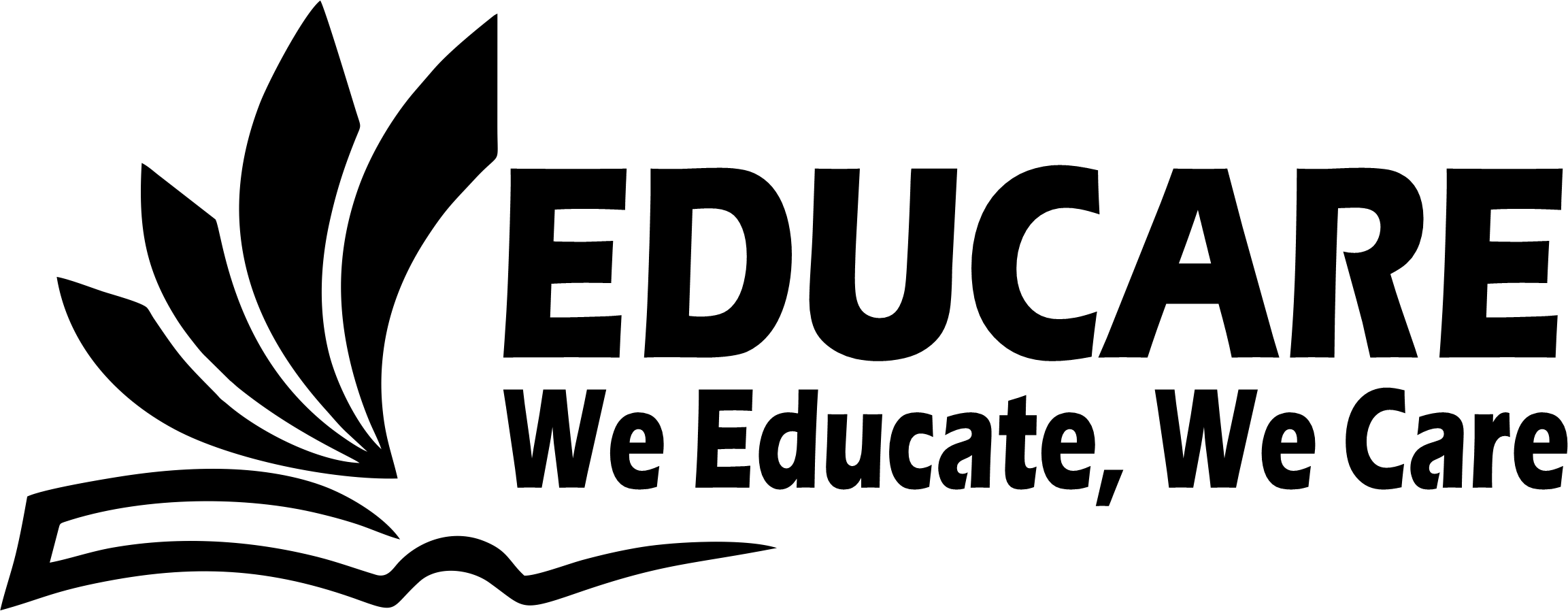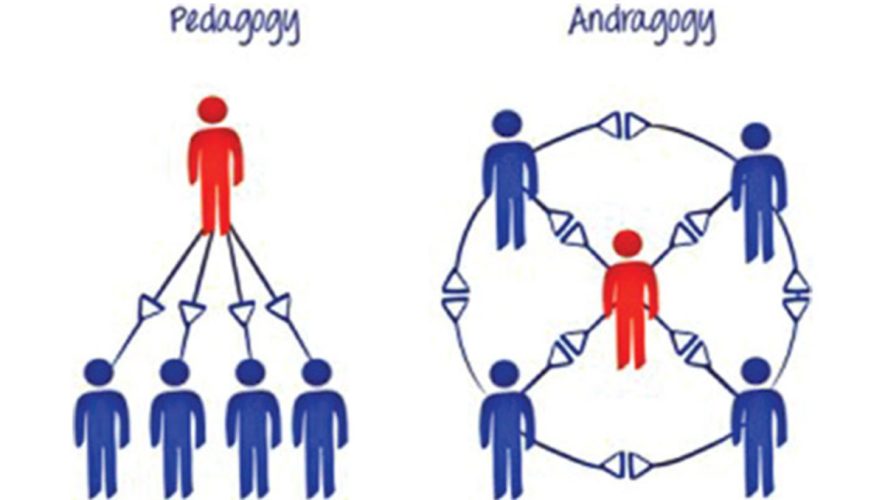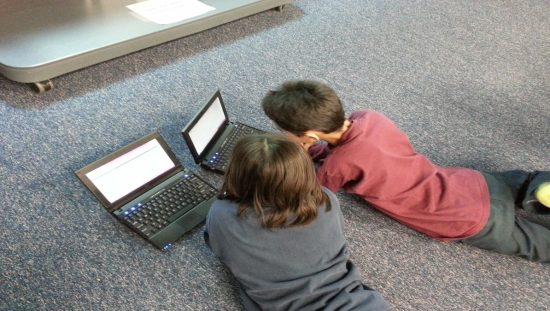The terms “pedagogy” and “andragogy” are of Greek origin, both including the Greek verb “ago”, which means “guide”, and the Greek words “paidi” (child) and “andras” (man) respectively. Thus:
Pedagogy = paidi (child) + ago (guide)
Andragogy = andras (man) + ago (guide)
You can conclude from the above that pedagogy is a child-focused teaching approach, whereas andragogy an adult-focused teaching approach; or, formally, pedagogy is the art and science of helping kids learn, whereas andragogy is the art and science of helping adults learn.
Pedagogy
Elaine Biech, author of Training for Dummies (2005) points out, pedagogy is a traditional style of teaching based on a didactic model, or lecturing. Generally, this model is content-centered and instructor-led. Pedagogy literally means the art of teaching children.
Whereas adults learn primarily because they want or need to, children’s formal learning is usually led by someone else and is based on children learning specific tasks to prepare them to learn additional, more complicated tasks.
For example, children first learn to count so that they can later learn to add and subtract; then later learn to multiply and divide; and then later algebra, geometry, and so on. Most people have experienced a pedagogical model of learning in which:
- The instructor is the expert because the learner has little experience, and the instructor is expected to impart wisdom.
- The instructor is responsible for all aspects of the learning process, including what, how, and when the learners learn.
- Learning is content-centred; meaning that objectives establish goals and logical sequence of materials is presented to learners.
- Motivation is external, and learners learn because they must reach the next level of understanding to pass a test, or acquire certification
Andragogy
Malcolm Knowles’s theory (1968) on adult learning, also known as andragogy, contends that five key principles affect the way adults learn. These five principles are:
1. Self-concept of the learner
As people mature, they develop a psychological need for self-direction. They often resent situations in which they feel someone else’s will is being imposed upon them. Adult learners learn best when they have a measure of control over their learning experience.
2. Prior experience of the learner
As people mature, they accumulate experience and knowledge that become a resource for learning. Whenever possible, linking new material to a learner’s existing knowledge is important for creating a powerful and relevant learning experience. In some situations, adults may learn new information that contradicts their current understanding and beliefs. In some cases, helping learners change their beliefs to accept the new information is critical. When possible, allow adult learners to assess their current knowledge and skip to information that is new and relevant.
3. Readiness to learn
As people mature, their readiness to learn relates increasingly to their need to learn to fulfil their roles effectively. As Knowles points out, “adults are motivated to learn as they experience needs and interests that learning will satisfy; therefore, these are the appropriate starting points for organising adult learning activities.” Adults participate in learning programs to achieve a particular goal and are most ready to learn information or developmental tasks when they can immediately apply the new knowledge or skills to real-life situations.
4. Orientations to learning
As people mature, they seek knowledge they can use immediately, resulting in a shift of learning from a subject focus to a problem focus. According to Knowles, adults’ orientation to learning is life-centred; therefore, the appropriate units for organising adult learning are life situations, not subjects. Adults are motivated to learn to the extent that they perceive that learning will help them perform tasks or is relevant in dealing with real-life situations. They learn new knowledge, understanding, skills, values, and attitudes most effectively when presented in the context of real-life or experience-oriented learning situations.
5. Motivation to learn
As people mature, their motivation to learn becomes increasingly internal. When challenged with a new job role or process, adults are motivated to learn. When adults become familiar with job roles and processes, fear or failure of having to unlearn something often decreases the motivation to learn. Only when specific need arises that has intrinsic value or personal payoff is an adult motivated to learn.
The following table present the most important points about the differences between child and adult learning derived from Knowles and other learning theorists.
| Learner characteristic | Pedagogy | Andragogy |
| Self-concept for the learner | Is dependent | Is self-directed |
| Prior experience of the learner | Does not use experience | Uses experience as a resource for self and others |
| Readiness to learn | Is directly related to age level and curriculum | Is developed from life experience |
| Orientation to learning | Is self-centred | Is task – or problem – centred |
| Motivation to learn | Is based on external rewards and punishments | Is based on internal incentives and curiosity |
OTHER RELATED POSTS
Early Childhood Education (ECE)



